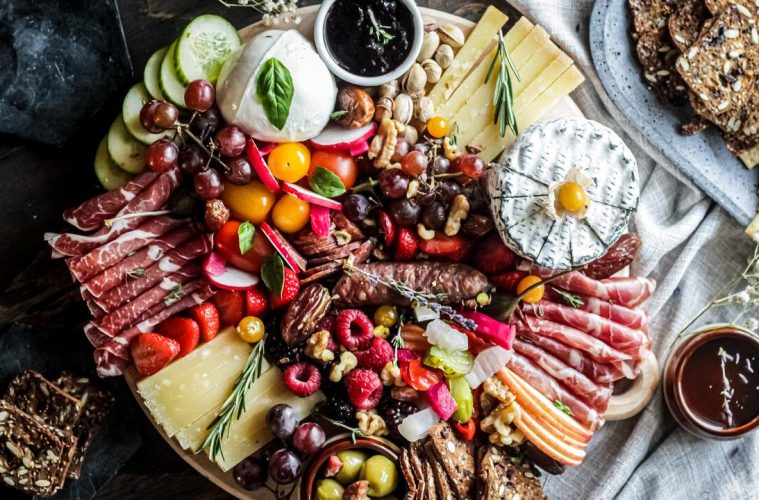An essential for entertaining, charcuterie boards are a delicious and elegant way to present snacks or starters at a gathering. The best part of a charcuterie board is how easy it is to make. They may look fancy, but they can actually be put together with minimal effort. Here is everything you need to know to put together a show stopping charcuterie board.
What is a charcuterie board?
Charcuterie is French for a shop that sells cold meats, and has come to mean the culinary art of serving cold meats. Nowadays, charcuterie boards often also involve cheeses, fruit, pickles, preserves and bread or crackers, meaning that they are easily customisable for any occasion.
How to create one
Cold meats
The first step in creating a charcuterie board is to decide which meats you will be using. There are so many options that can easily be picked up at your local grocery store, like hams, salami, prosciutto, chorizo and more. The key is to choose between three and five different meats for some variety. Depending on the kind of meat, the slices can be laid out on the board or folded into different shapes.
Cheese
There are also countless different cheeses that you could select for your charcuterie board. Try to add a variety of soft, hard and creamy cheeses that will pair well with the meats that you have selected. It is also nice to place cheeses that go with certain meats near each other. Unsure whether to cut the cheeses ahead of time? A good rule of thumb is to cut the harder cheeses but leave softer cheeses unsliced.
Pickles
Olives, pickled onions and gherkins are all options for the pickled element on your board. Pickles add salty and acidic flavour profiles to the boards and always pair well with cold meats and cheeses. Keep in mind that pickles will need to be placed into dishes on your charcuterie board, so don’t forget to account for that space needed when setting out the board.
Condiments
You might want to include some sauces, spreads or jams on your charcuterie board. Place them in small dishes and make sure to position them close to the ingredients that they will pair well with. For example, fig jam complements a softer cheese so it should be placed near cheeses like brie or camembert.
Crackers and bread
Breadsticks, crackers or sliced baguette will all add some texture and crunch to your charcuterie board. They also have the added function of being a vessel for your meats and cheeses, and are therefore (in our opinion) an essential part of your board. Crackers and breads are often placed on the charcuterie board itself amongst the other ingredients, however if you’ve run out of space they can always be put on a separate board.
Fruit
Any fruits that you add should be pre-sliced and also placed near to the ingredients that they will complement. Grapes are a common favourite on charcuterie boards, but other fruits like apples, figs and even berries could also add an element of sweetness and a gorgeous pop of colour to your board.
Overall, charcuterie boards are about creativity and fun! They can be transformed into just about any form that you can think of.
Did you like this article? Follow us @sagardenandhome on Instagram for more!
READ MORE: 5 Savoury Herbs To Pair With Sweet Desserts
Featured Image: Anto Meneghini via Unsplash


